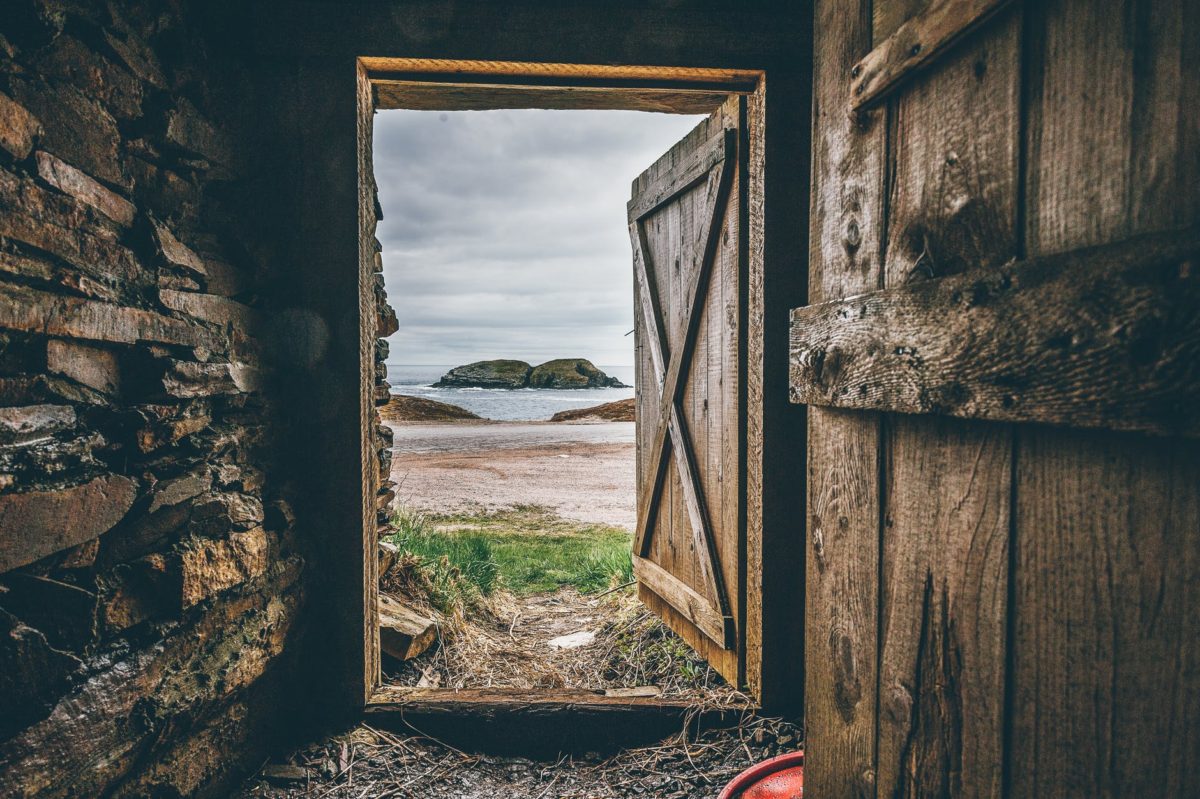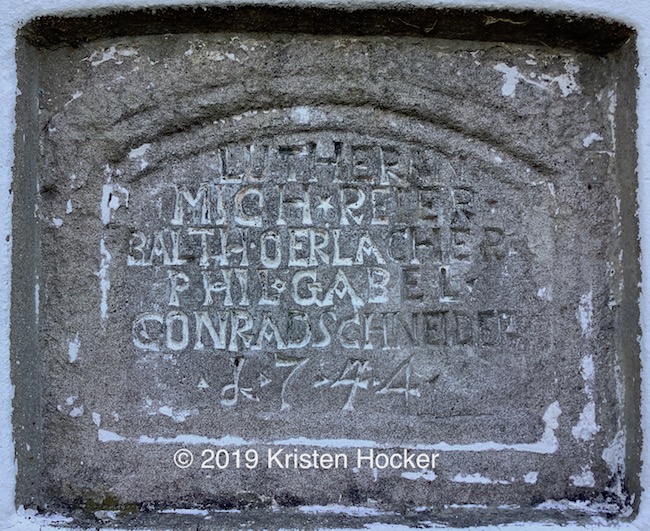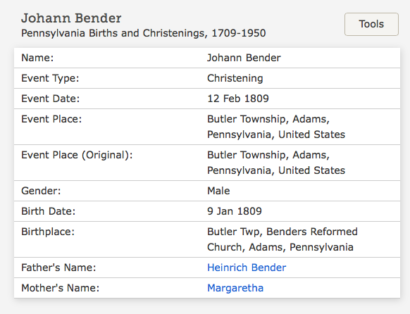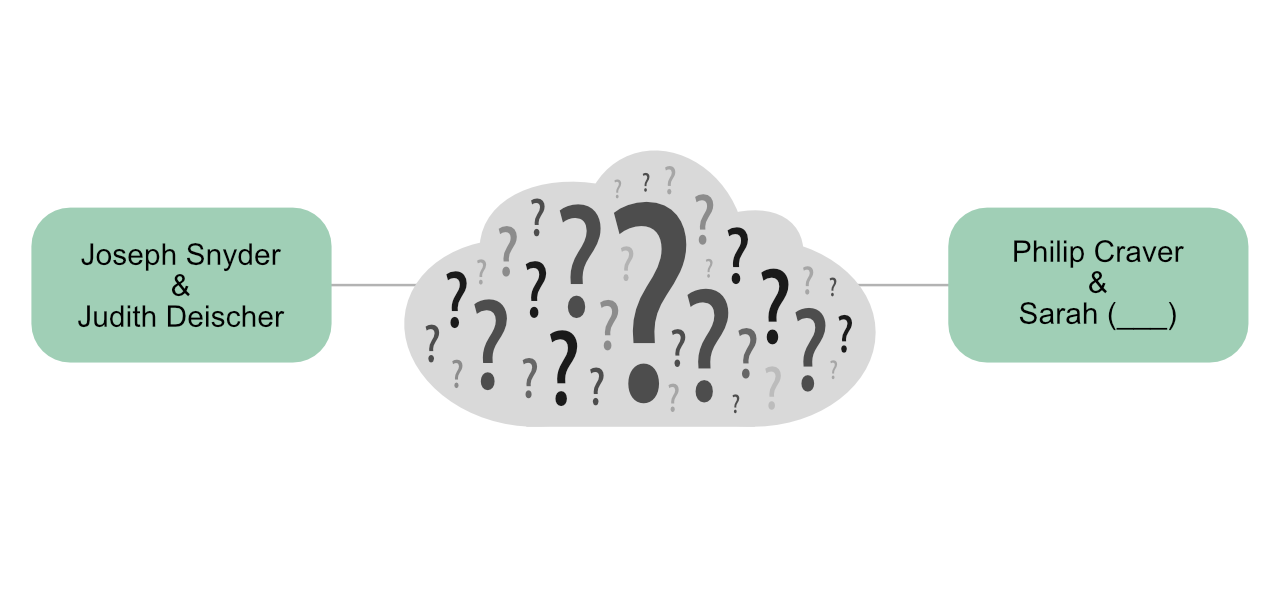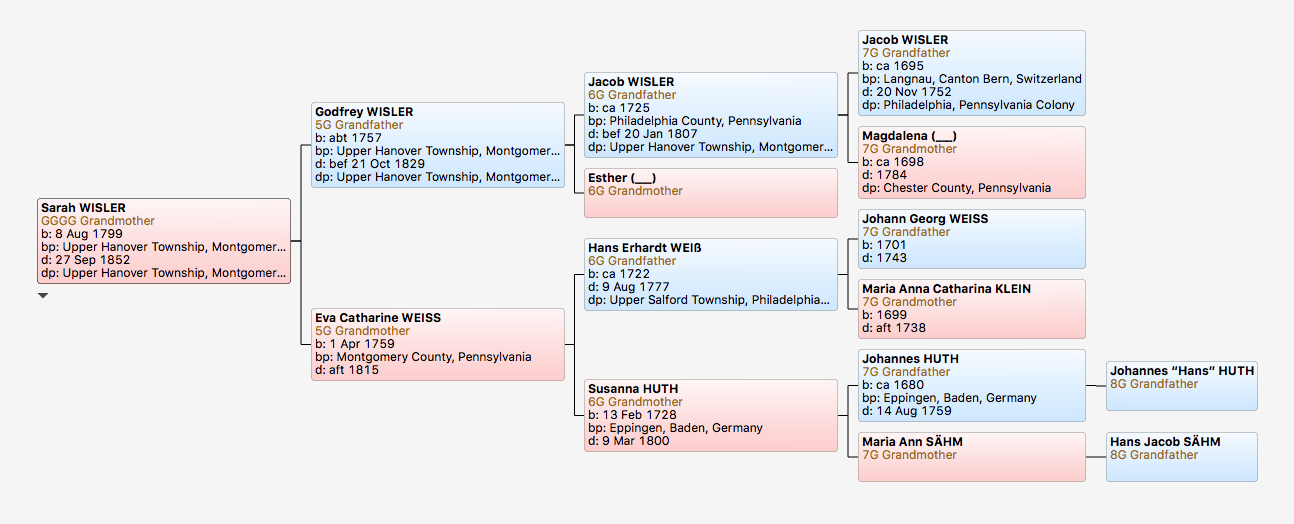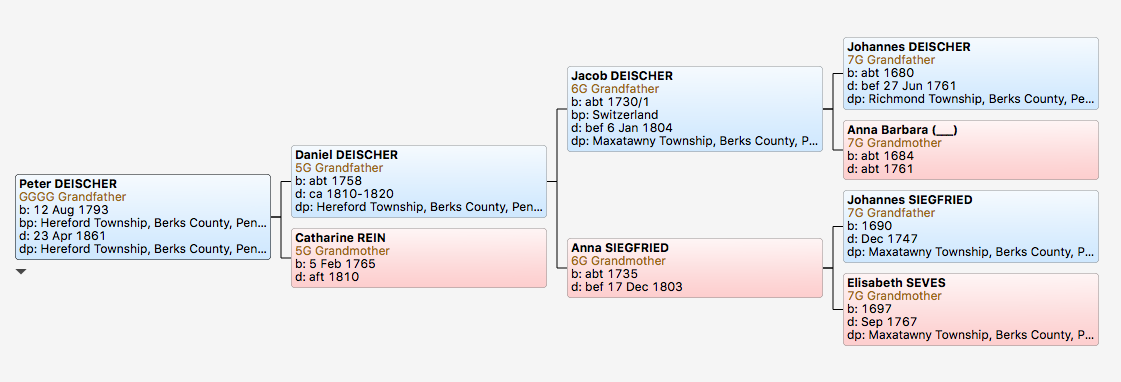Genealogy: A New Perspective from A Discovery of Witches
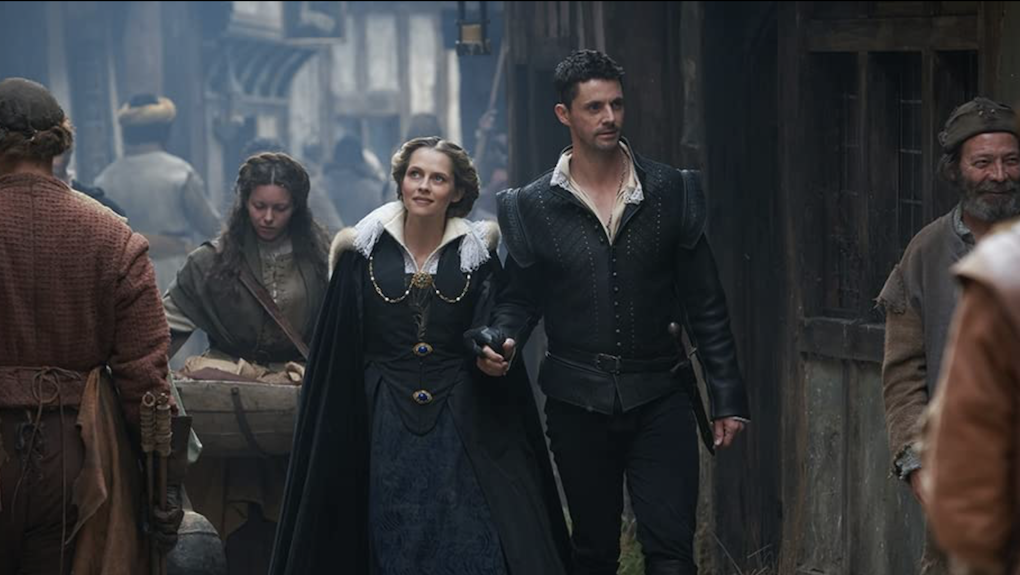
Next to genealogy, my favorite pastime is reading. I enjoy a variety of genres of fiction, as well as non-fiction on occasion. Recently, intrigued by the ads for the second television season of A Discovery of Witches, starring Teresa Palmer as Diana Bishop and Matthew Goode as Matthew Clairmont, I read the All Souls trilogy by Deborah Harkness (A Discovery of Witches, Shadow of Night, and The Book of Life).

With an historian, who happens to be a non-practicing witch, researching Alchemical ancient manuscripts and a vampire geneticist, it hit a couple of my reading and genealogy sweet spots. I gobbled up all three volumes as fast as I could. Then I binged the first season of the show so I could be all caught up before the new season started.
In season two, Diana and Matthew travel back in time to England in 1590 in search of a witch to teach Diana how to use her magic. Drama and adventure ensues.
While I’m enjoying the show, I was not prepared for the sense of connection I feel. Knowing that I had an ancestor who I can identify by name who was living in London the very year the show is portraying added an unexpected dimension and gave me a new perspective on his life.
Richard Dungan
My 13th great grandfather Richard Dungan died in St. Martin-in-the-Fields in 1609 and was buried as a gentleman with “a hand-carved coat of arms on his coffin.”1 He was most likely born in Ireland either in Dublin or Dunganstown in County Wicklow.
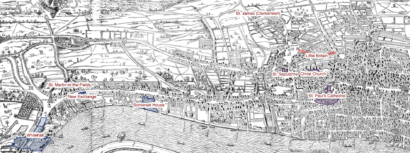
When he died, he was living at a house referred to as the Horseshoe in St. Martin-in-the-Fields. Prior to that, however, he lived and owned properties on Little Britain street in St. Botolph’s parish in Aldergate, just outside the London city walls.2 [see image above] There were also associations between family members and St. James Clerkenwell, St. Sepulchre, and Christ’s Church. In Shadow of Night, the basis of season two of A Discovery of Witches, Diana and Matthew spend time in the Black Friars section of London. But I imagine that Richard’s environs were not that much different.
In 1590, Richard was granted “the place of Master Plasterer to the Queen” after the death of John Symmonds, in place of Symmonds’ partner who had recently died.3 When Symmonds died in 1597, Richard was elevated to the position of Queen’s Master Plasterer on July 4th.4 He served as master of the Plasterers Company in 1601/2, 1604/5 and 1606/7.5
As such, Richard worked on a number of Crown projects at Whitehall, the Royal Palace at Greenwich, St. James Palace, and Somerset House, among others.6 He also did private work, including for Robert Cecil, son of William Cecil, Lord High Treasurer to Elizabeth I, who appears as a character in the show for whom Matthew was working as a spy. It’s a second-hand connection, I know, but if Richard did work for the crown, then I imagine he might have had some contact with agents of the Lord High Treasurer, too.
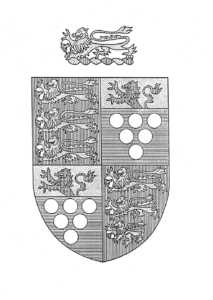
1598
In 1609, Richard did work at “Brittains Burse” also known as the New Exchange for Robert Cecil’s agent.7 The New Exchange was a center for the purchase of luxury goods, including perfumes. This is important because it—along with Richard’s residence at the Horseshoe, helps to tie Richard to his grandson William Dungan (c1600-1636) of St. Martin-in-the-Fields, a perfumer, who rented space in the Burse for two shops and a small residence8 from at least 1628 through 1637.
After William’s death, his widow, Frances (Latham) Dungan, and their children left England with her new husband, Capt. Jeremy Clarke, and settled in Rhode Island. My 10th great grandfather, William and Frances’ son, Rev. Thomas Dungan (1635-1688), started the first Baptist church in Pennsylvania at Cold Springs, Bucks County, Pennsylvania. His descendant Rachel Jones’ pedigree is—to the best of my knowledge—the only line on my mother’s side of the family which is not of German heritage.
Watching this TV show has unexpectedly given me a deeper feeling of connection to my little explored English roots and especially to my London ancestor, Richard Dungan.

